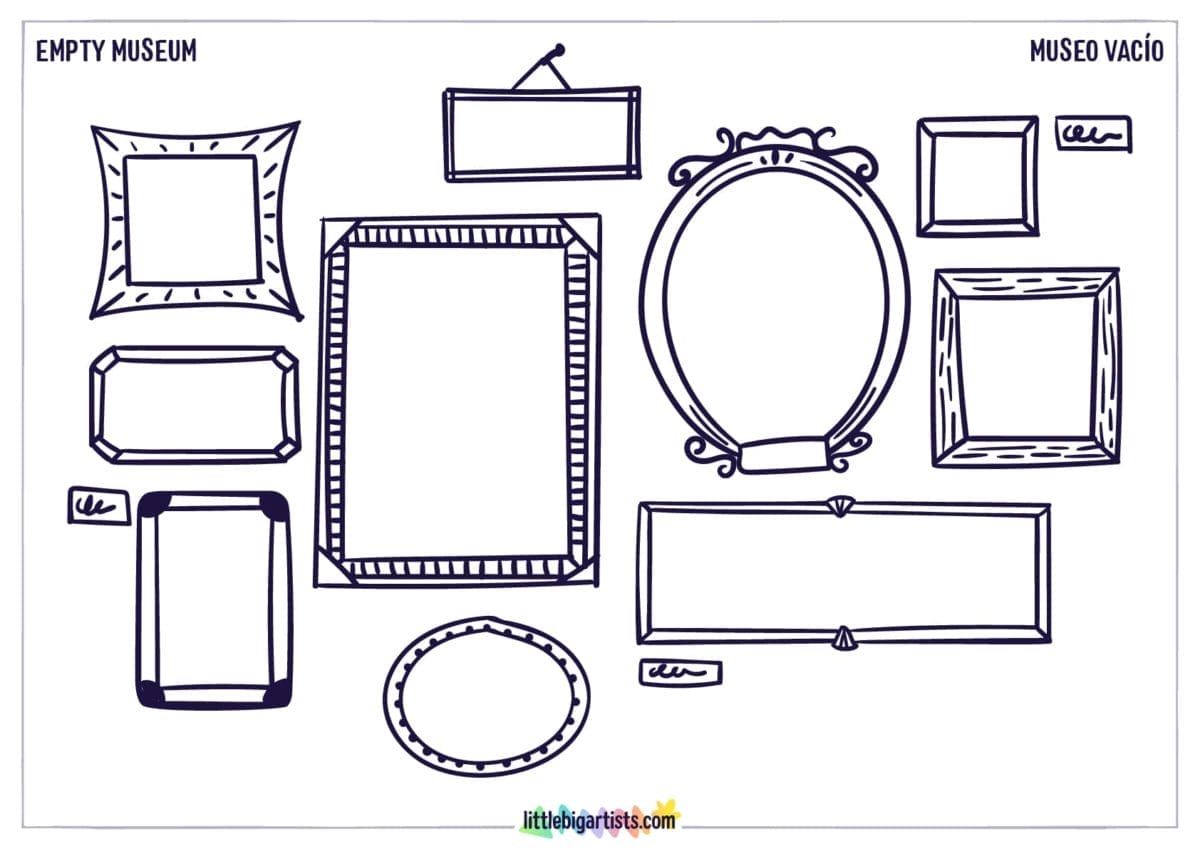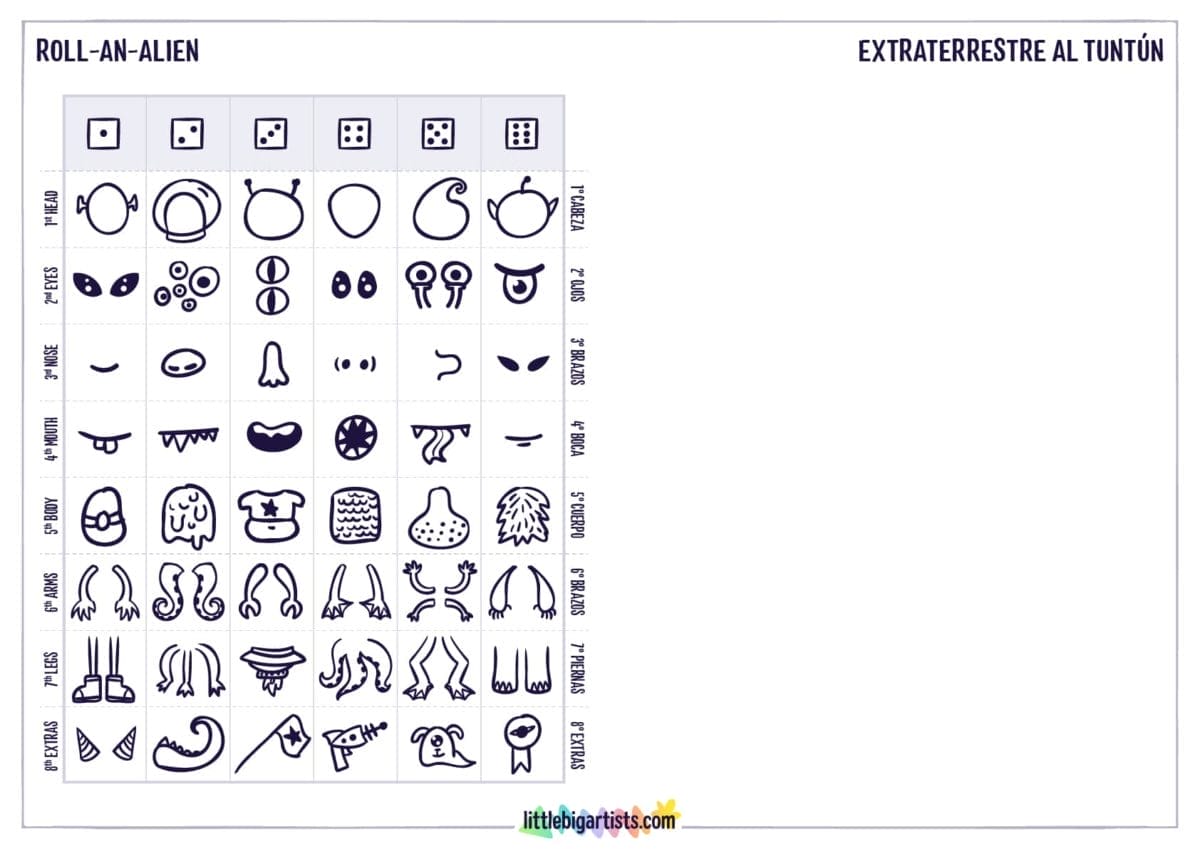Have you ever seen your little one gaze at a colored pencil as if it were an alien object? Discover how to turn that reluctance into a colorful and creative journey that benefits their development.
Remember the first time your child picked up a paintbrush? Maybe they scribbled meaningless lines, or perhaps they haven’t yet experienced the magic of painting their world on paper. Drawing is not just a recreational activity; it’s a window into creativity, emotional expression, and the cognitive development of young children. If you’re concerned your child isn’t interested in drawing, or you’re simply looking for ideas to encourage this skill, you’re in the right place. I’ll guide you through proven and enjoyable strategies that will help motivate your child to pick up that pencil and start their artistic journey.
- When Drawing Isn’t Your Little One’s Passion
- Why is Drawing Crucial for Children?
- How to Motivate Children to Draw
When Drawing Isn’t Your Little One’s Passion
My kids are budding artists. With a few sheets of paper and some markers, they immerse themselves in their colorful world, often in complete silence (a rare blessing! 😂). At home, we greatly encourage this activity because a) we love to draw, b) we know the multiple benefits it brings, and c) it’s incredibly useful to keep them busy when we’re out and about, whether it’s at a restaurant, in a doctor’s waiting room, or on vacation trips. All we need is a notebook and a pencil, and voilà!

However, when other parents see my kids drawing, they often ask: “How do you get your child to draw so much? Mine hardly ever does (or has stopped doing it)”. My answer is usually simple: “Don’t force it”. Each child has their interests, and sometimes we need to accept them without imposing our own. Generally, children who aren’t inclined to draw are busy developing other equally valuable skills.
But I totally understand what it’s like to be a parent and worry because your child doesn’t show interest in something you consider beneficial or enjoyable, like socializing, running, dancing, etc. They might even want to do it, but lack confidence. Though my advice remains “don’t worry too much”, I know that’s easier said than done.
Why is Drawing Crucial for Children?
Drawing is much more than a game or a form of entertainment; it’s an essential component in the cognitive and emotional development of children. Among the benefits of drawing highlighted by educators are:
- Encouraging creativity
- Boosting self-esteem
- Reducing stress and anxiety
- Facilitating emotional expression
- Developing academic skills
Now, would you like to know specific strategies to encourage your child in the art of drawing? Let’s dive in.

How to Motivate Children to Draw
While some children naturally gravitate towards drawing, others may need a little nudge to explore their creative side. Let’s look at what strategies have helped awaken the passion for art in our little Picassos.
Creating a Space and Time for Art
For young ones, drawing is yet another adventure in their world of play. And like any adventure, it needs its own special space and time to be fully enjoyed.
At home, we’ve created special corners for drawing, spaces where our kids know they have everything they need to unleash their imagination. It’s important that this place suits their needs: accessible materials, an environment we don’t mind getting messy… and one that respects their personality. For example:
- Some children enjoy drawing in company, so the living room, kitchen, or even the office can become their impromptu art studios.
- Others prefer the tranquility of their bedroom to immerse themselves in their world of colors.
- It’s essential to choose a place where the child already enjoys spending time. It makes no sense to set up a drawing space in a forgotten corner of the house.
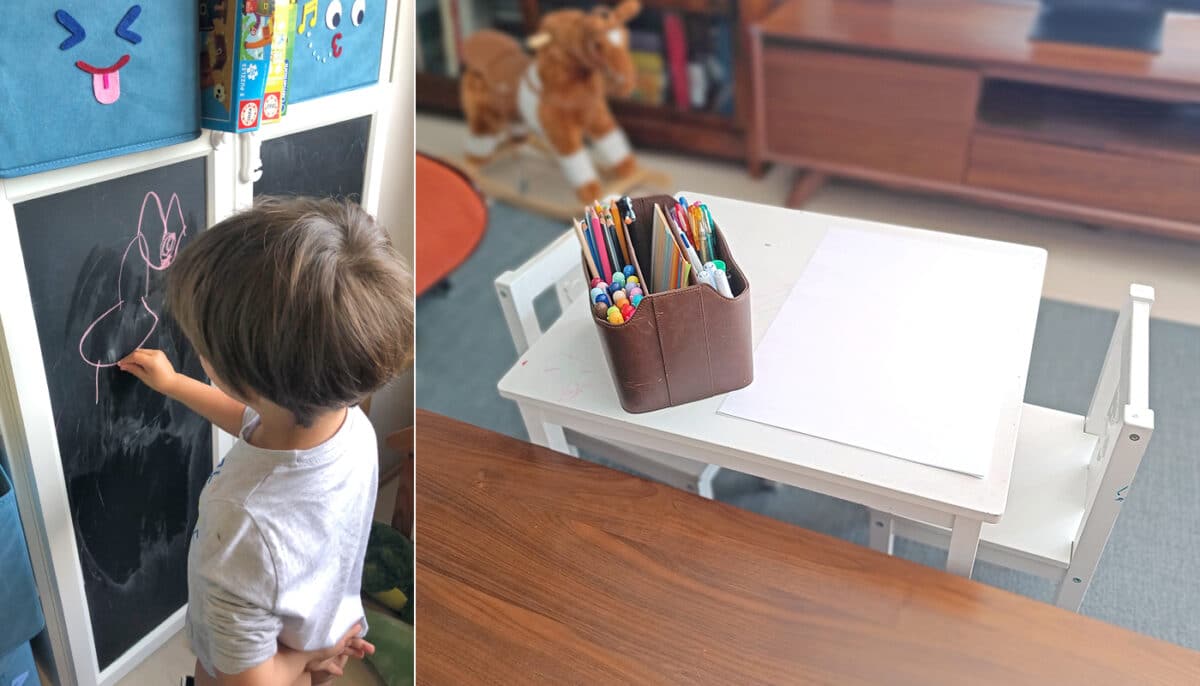
Our drawing space has evolved with our children. We started with a chalkboard in their room (a vinyl sticker on a cupboard door) and now they have their little table in the living room, as they prefer company. And we know that, over time and with schoolwork, this space will move to their rooms.
Time is also key. If children don’t have free time at home to play or even get bored, they’re unlikely to find a moment to draw. This seems obvious, but it’s crucial to remember.
Overcoming Obstacles
Typical scene:
- Mom, I want to draw - Wait until I finish this, I'll set up the table and get the paints out - Mooooom! - Coming, coming, here's everything, but please don't make a mess! Will you be careful? - Geez, mom - And then clean everything up, okay? Don't leave it a mess - Never mind, I don’t feel like it anymore - Well, now that I've gotten everything out YOU WILL DRAW, END OF DISCUSSION!

Sound familiar? Sometimes, with the best intentions, we are the ones who demotivate our children in their activities. If children have their own space with materials always accessible and don’t depend on us, the barriers to even start a small doodle are greatly reduced.
Exploring Various and Exciting Drawing Materials
When I was a child, drawing was my passion, but there was something about wooden colored pencils that I just didn’t like. Instead, soft crayons were my delight. Just as I had my preferences, each child has their own. It’s crucial to offer them a variety of materials until we find what motivates them most. Today, the options are almost limitless:
- Pencils, waxes, and classic crayons.
- Markers of various types: with normal, thick, brush tips, chalk, or fluorescent.
- Soft waxes, floor chalks, stick temperas.
- Colored pens and gel pens with special effects like glitter.
- Temperas, watercolors, and finger paints.
To optimize costs, asking for drawing materials for birthdays or Christmas can be a great idea. This way we can replace what’s been used up and experiment with new items, while avoiding an excess of toys on these occasions.
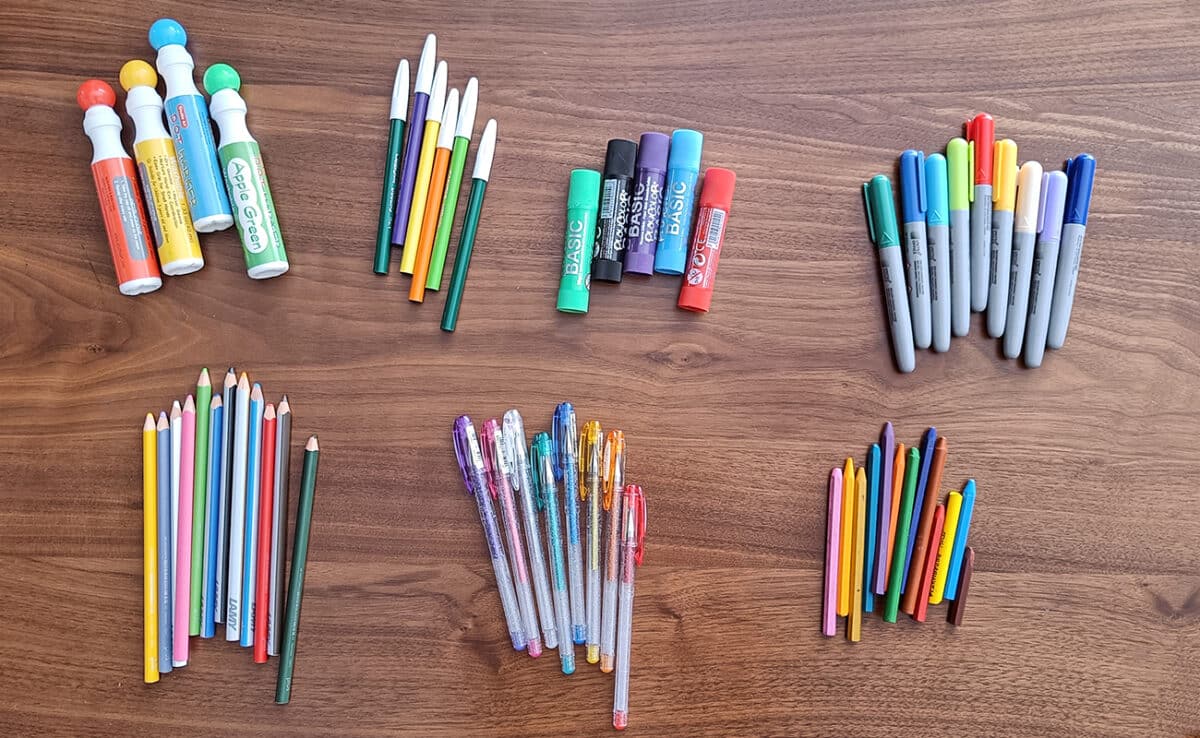
In our house, we have a variety of materials, as you can see in the photo. Currently, markers are the favorites, but they have gone through different phases. When they were younger, for example, they preferred solid temperas. We have found a storage solution that allows us to have almost everything on hand and, at the same time, is easy to organize and transport, ideal for those moments of inspiration on the floor.
Diverse and Creative Drawing Surfaces
Not all children feel comfortable in front of a large blank sheet. Some prefer tiny formats, while others need to move and use their whole body when drawing. Experiment with different surfaces to see which sparks their interest, such as:
- A small A6 size notebook, perfect for carrying everywhere.
- 8×5 cm cards for quick and fun creations.
- Drawing pads with specialized paper according to the child’s favorite technique: rough for pencils and crayons; smooth and satin for markers; absorbent for watercolors, etc.
- Whiteboards with erasable markers or blackboards for chalk (low dust options available).
- Walls and exterior sidewalks for drawing with chalk (the rain will take care of erasing!).
- Home windows turn into a canvas with chalk markers.
- Cardboard boxes from online purchases become an unexpected canvas, perfect for experimenting with temperas, chalks, and soft crayons.
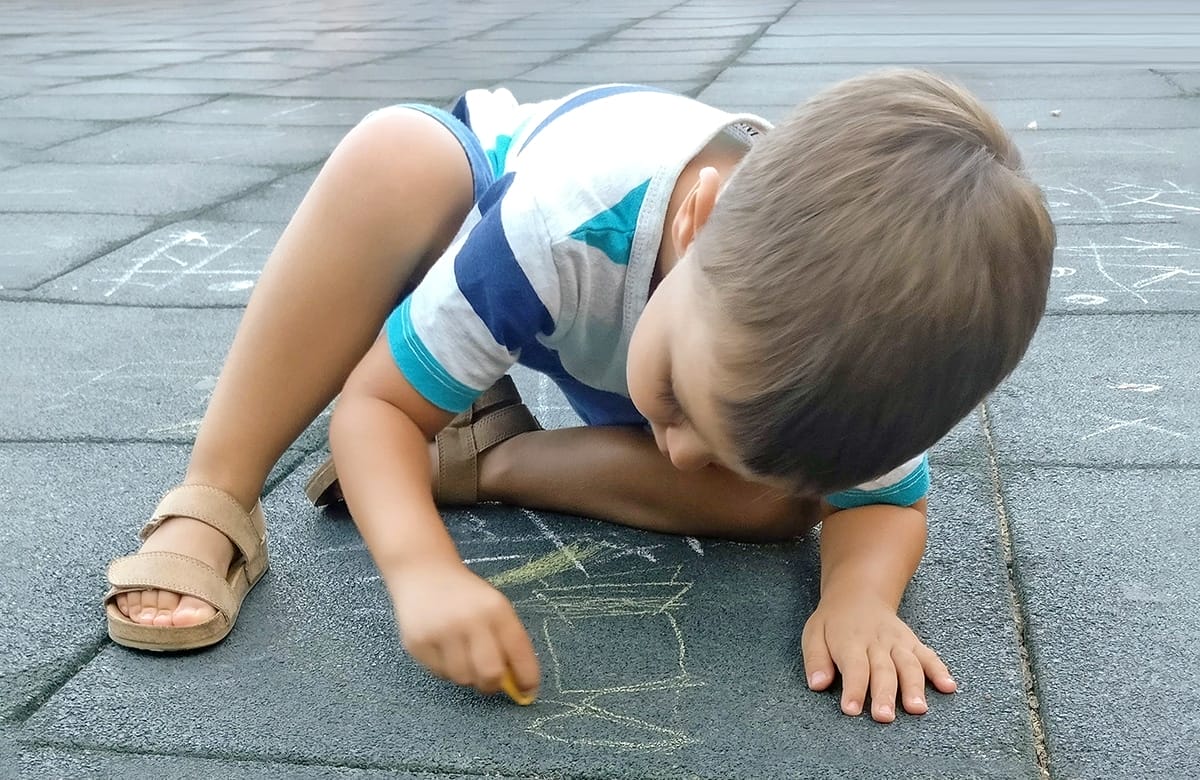
At home, we always have A3 paper packs and a 90 cm wide by 50 meters long plotter paper roll. The A3 sheets are ideal for drawing at the table, while the paper roll allows for drawing on the floor, creating a fun and shared experience, especially when friends come over. Also, its quality-price ratio is excellent, as it’s 80g paper and can be used on both sides.
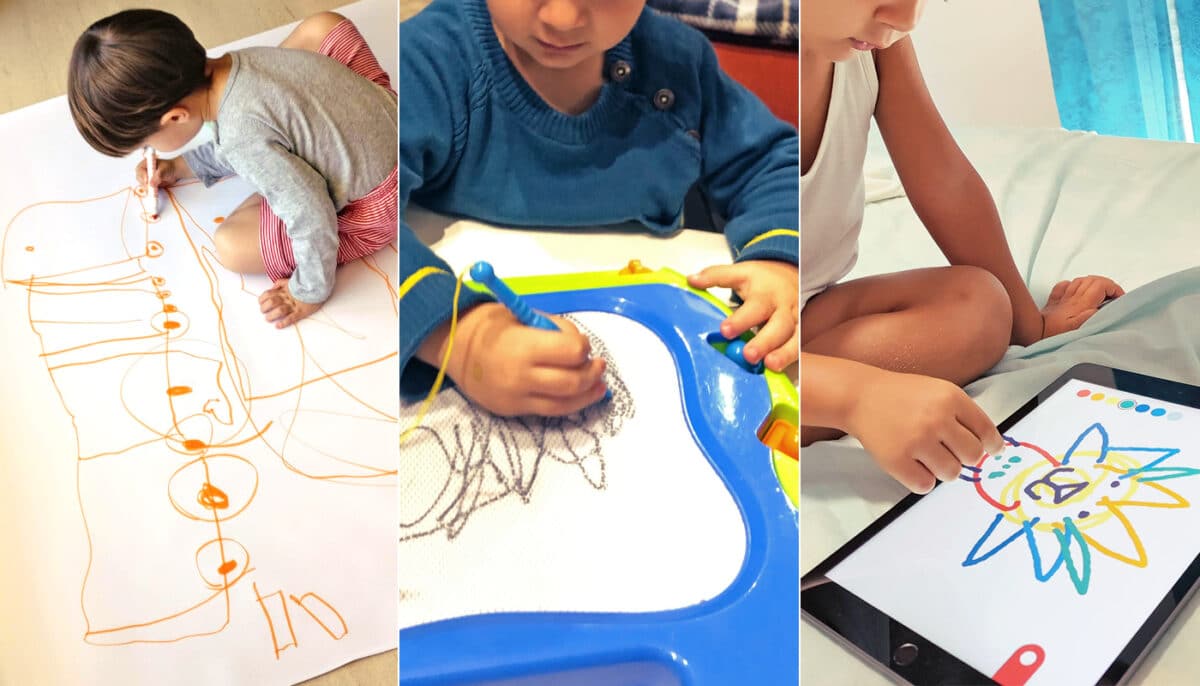
Participate and Draw with Them
Children, innate masters of imitation, are inspired by what they see adults do. So, even if you feel insecure about your artistic skills, drawing alongside them can be tremendously motivating. It doesn’t matter if your drawings aren’t museum-worthy; your children will love seeing you participate and will be more inclined to join in and enjoy the process with you.

Show Interest Without Judgment
Each drawing, in its uniqueness, is a window into the child’s inner world. Some find joy creating colorful monsters with markers, while others prefer brushes for serene landscapes. Even random doodles are a form of expression. There are no “incorrect” drawings, therefore, avoid criticizing or correcting their creative choices, like a green sea or a purple sky.
When they draw, focus on the creative process as much as or more than the final result. Show interest in their sources of inspiration. Invite them to share their works at different stages, even if they are not finished, and to talk about what they plan to do next and why.

It’s crucial to encourage your child to experiment with new ideas, appreciating both successes and failed attempts. If something doesn’t go as expected and they feel frustrated, it’s important to remind them that mistakes are just as valuable learning opportunities as successes. The goal of drawing is to enjoy the creative act, not just to achieve a perfect outcome.
Provide Creative Starting Points: Activities and Games
Often, a blank sheet can be intimidating to children, stifling their creative impulse. To overcome this challenge, offer your little artists starting points that ignite their imagination. What are they most passionate about right now? It could be anything from dinosaurs to robots, unicorns, car washes, or puppies. Use these interests as catalysts to spur their creativity.
In addition, I invite you to explore the drawing activities and games I’ve specially designed for Little Big Artists. They are meant to be fun and educational, helping children develop skills such as critical thinking, decision making, problem solving, and self-confidence, all key elements in creative thinking.
Some of my children’s favorite activities include:
Empty Museum
What a boring museum! Where are the artworks? Draw them.
Visual Music
Listen to the music and draw the images, shapes, and colors it conveys to you.
Exploring the Deep
This submarine is searching for new marine species. Can you draw them?
Roll an Alien
Roll the dice and draw according to the number. What kind of alien will emerge?
What Are You Thinking?
Draw inside your head what you are thinking or what interests you.
If You Have a Little One Who Doesn’t Show Interest in Drawing
First, recognize that every child is unique and might have different interests or creative passions. If you’re concerned about your child’s lack of interest in drawing, the above tips can be a great starting point to engage them in this activity. However, always remember to respect and nurture their personal interests.
If you’ve experienced this situation and found effective techniques that worked with your kids, I’d love to hear them! Share your experiences and advice by leaving a comment. Your input could be incredibly helpful to other parents looking to inspire their little artists.


